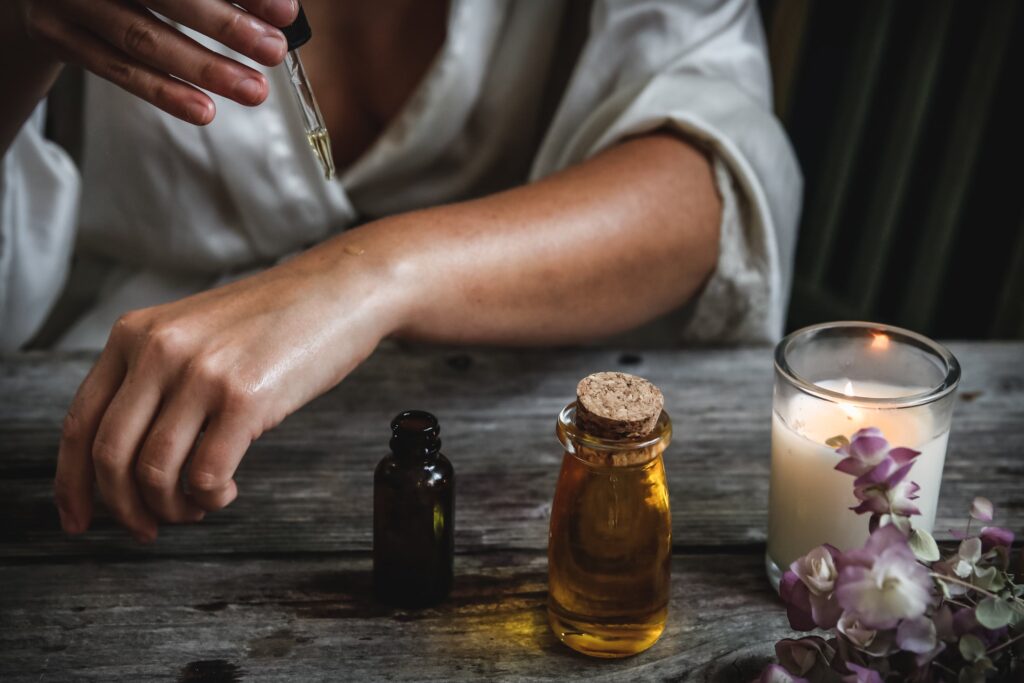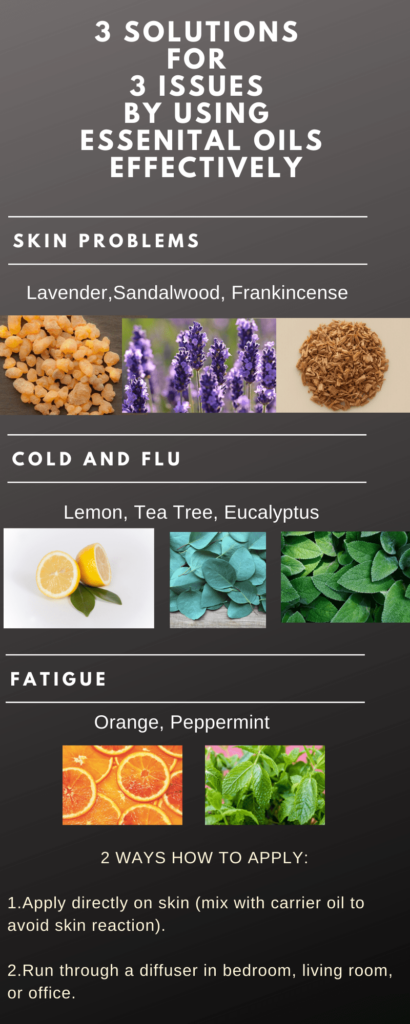The ultimate guide on how to buy quality essential oils PART I

Not all natural essential oils are pure natural. So it is very important to be able to know the differences between a quality product and a fake one, especially when it comes using it in your skin care routine.
There is much to be said about the quality of essential oils, about Gas Chromatographic analysis and Mass Spectrometry (which determines whether the essential oil has been adulterated with compounds that normally should not be found in it).

What information should I look for on essential oils labels
• Avoid labels that say:”fragrance”, “nature- identical”, “perfume oil”, “fragrance oil”
These labels indicate that they are not pure essential oils. In this case their main purpose would be not a therapeutic, but a ”smelling nicely” one.
Look for the following main information on the labels or prospects:
• The common name (which everyone knows) and the Latin name of the plant (it is important because different varieties have different properties and different safety recommendations).
For example:
Peppermint has different species of mint and some are even poisonous– Peppermint x (Menthol, Menthone,1,8-Cineole, Menthyl acetate etc.) is contraindicated for young children, while Spicy mint ( Mentha piperita), when applied to the skin is not.
•The part of the plant from which the oil was extracted from
– likewise, the properties and the quality of the essential oils are different depending on the part of the plant from which it was extracted.
For example:
The essential oil obtained from leaves or Juniper twigs is inferior to that obtained from fruits (or citrus fruits).
• The safety information
– some oils have certain restrictions and contraindications for use.
For example:
“Not to be used on children under 3 years”, “not to be used before sun exposure”, “to be used in maximum concentration of 1%”, “not to be used on injured skin”, etc.
• Distilled version
An oil labeled as an extraction is different from a distillation. In extracted essential oils chemicals have been used to separate the plant’s volatile aromatic compound VAC, which is not considered ideal for health.
How to detect the quality ingredients from the essential oils
Lemon oil, tea tree oil, citrus oil, lemon grass, rose oil, lavender oil, etc. There are so many types of essential oils but what kind of ingredients where used to create these mixtures? Here are the details to pay attention while reading the list of ingredients:
•The extraction method of the plant
This is important because the therapeutic properties of the oils are affected if the essential oils are extracted by methods that involve high temperatures or the use of various solvents, stabilizers, distillation accelerators, etc .
• In some cases, the chemotype
Some species of plants have the genetic ability to generate different chemical constituents, depending on the environment in which they grow.
These different chemical types of the same plant variety are called “chemotypes”. Different chemotypes of the same plant often have different safety properties and recommendations.
For example:
Rosemary ct. Camphor Oil is especially indicated for pain, while Rosemary ct. Verbenone addresses more to skin problems.
• The country of origin of the plant
This is important because conditions such as soil, climate, cultivation methods, etc. can affect the properties of the essential oils.

What you should pay attention to while you shop for pure essential oils
• The recipient must be glass, preferably dark in color
The essential oils can erode the plastic, thus becoming contaminated (the plastic particles mix in the oil, affecting its properties), and the light, through UV rays, speeds up the oxidation process of the essential oil.
• Pay attention to the oils sold in natural shops, traditional medicine chains, etc.
Because they do not sell “like hot bread”, essential oils can remain on the shelves for a long time. Thus, they can be oxidized or have an oxidation beginning process, if the glass recipient is unsealed, the more likely the oil is oxidized. Either because the products are old, or because of the risk of being improperly stored: in rooms that are too hot, exposed to light, etc..
Also, organic shops rarely invest in high quality oils, because there is the risk (very high on the Romanian market for example) of remaining with the product in stock due to the expensive price.
In addition, the owners and sellers of the organic shops do not know as much about aromatherapy and essential oils as the company, expert (or entrepreneur) whose main activity is in the specific area of true aromatherapy.
For more information about how to choose quality essential oils, click here for part II.

